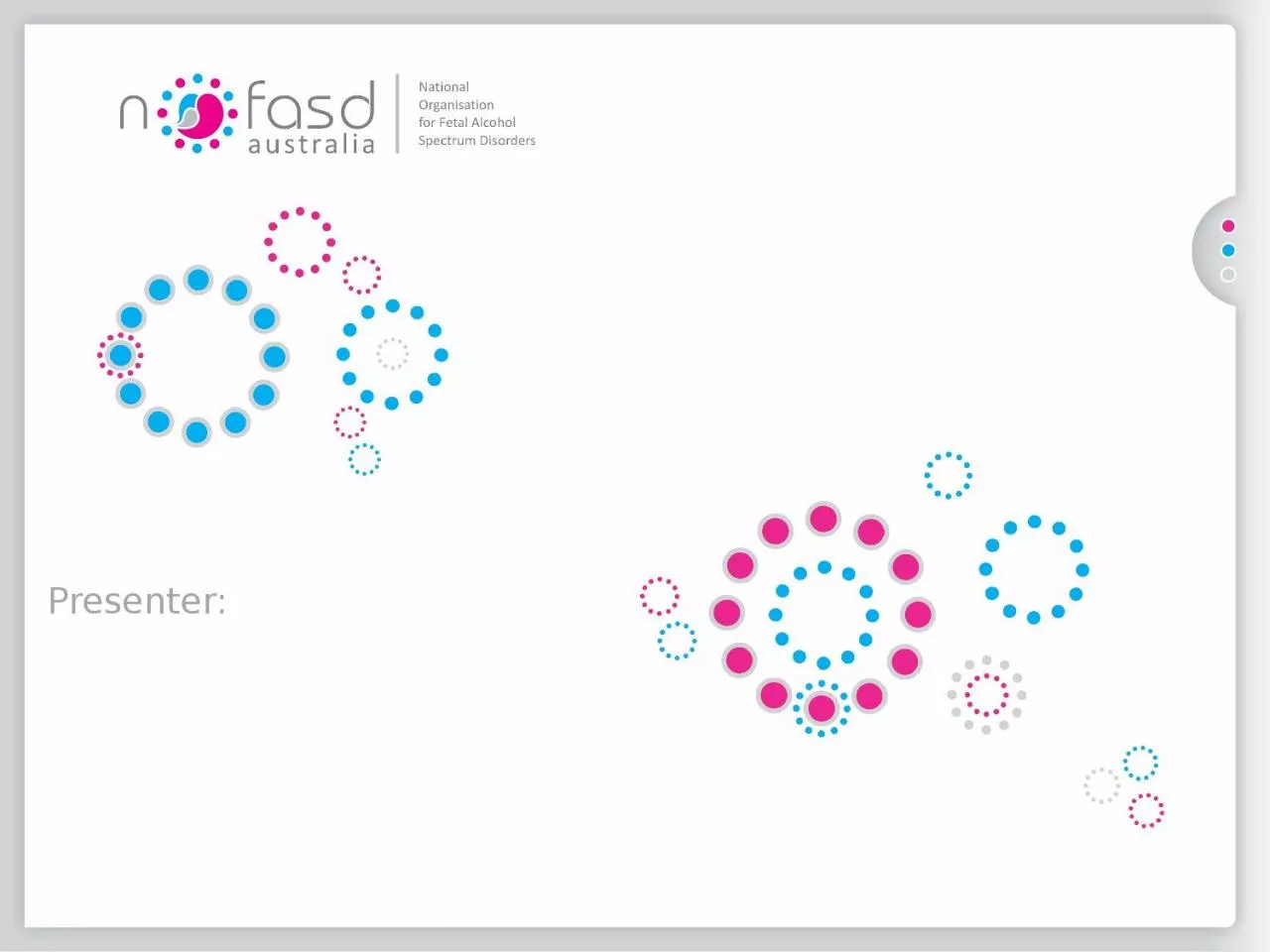

What causes FASD Prevalence in Australia FASD 4 NHMRC guidelines recommend Woman who are pregnant or breastfeeding A To prevent harm from alcohol to their unborn child women who are pregnant or are planning a pregnancy should not drink alcohol ID: 1039516
Download Presentation The PPT/PDF document "Presenter: Acknowledgement" is the property of its rightful owner. Permission is granted to download and print the materials on this web site for personal, non-commercial use only, and to display it on your personal computer provided you do not modify the materials and that you retain all copyright notices contained in the materials. By downloading content from our website, you accept the terms of this agreement.
1. Presenter:
2. Acknowledgement
3.
4.
5.
6.
7.
8. What causes FASD?
9.
10. Prevalence in AustraliaFASD 4%
11.
12.
13.
14.
15.
16.
17.
18. NHMRC guidelines recommendWoman who are pregnant or breastfeeding A. To prevent harm from alcohol to their unborn child, women who are pregnant or are planning a pregnancy should not drink alcohol.B. For women who are breastfeeding, not drinking alcohol is safest for their baby.
19.
20. The Australian Diagnosis
21.
22.
23.
24.
25.
26.
27.
28. FASD diagnostic guideThe Australian Guide to the diagnosis of FASD was updated in 2020A copy is available on the FASDHub website FASD Diagnosis: Australian Guide to the diagnosis of FASD | FASD Hub
29.
30.
31.
32.
33.
34.
35.
36.
37.
38.
39.
40.
41.
42.
43. National Organisation for Fetal Alcohol Spectrum Disorderspostal: PO Box 169, Morley, WA 6062telephone: 1300 306 238email: enquiries@nofasd.org.auwebsite: www.nofasd.org.auABN : 93 833 563 942Thank You
44. Selected referencesBlaschke, K, Altaverne, M & Struck, J. (2009). Fetal Alcohol Spectrum Disorders Education Strategies: Working with Students with a Fetal Alcohol Spectrum Disorder in the Education System, Centre for Disabilities, Sanford School of Medicine of the University of South Dakota Bower C, Elliott E, 2016, on behalf of the Steering Group. Report to the Australian Government Department of Health: Australian Guide to the diagnosis of Fetal Alcohol Spectrum Disorder (FASD). Grant, B. (2015). Barriers to alcoholism treatment: reasons for not seeking treatment in a general population sample. Journal of Studies on Alcohol, 58(4), 365–371. Jones, K., Smith D., Ulleland., C., Streissguth, P. (1973). Pattern of malformation in offspring of chronic alcoholic mothers. Lancet. 1(7815), 1267-71. Lawryk, L. (2005). Finding perspective ... Raising successful children affected by FASD. Alberta:OBD Triage Malbin, D (2000). Trying Differently Rather than Harder, Portland:FASCETS McLean, S., Kettler, L., Delfabbro, P., & Riggs, D. (2012). Frameworks for understanding challenging behaviour in out-of-home care. Clinical Psychologist, 16(2), 72-81. O'Keeffe L, Kearney P, McCarthy F, et al (2015). Prevalence and predictors of alcohol use during pregnancy: findings from international multicentre cohort studies, BMJ Open 2015(5):e006323. Paley, B., & O’Connor, M. (2011). Behavioral interventions for children and adolescents with fetal alcohol spectrum disorders. Alcohol Research & Health, 34(1), 64–75. Rasmussen C, Soleimani M, Pei J. (2011). Executive functioning and working memory deficits on the CANTAB among children with prenatal alcohol exposure. J Popul Ther Clin Pharmacol. 18(1):e44-53.